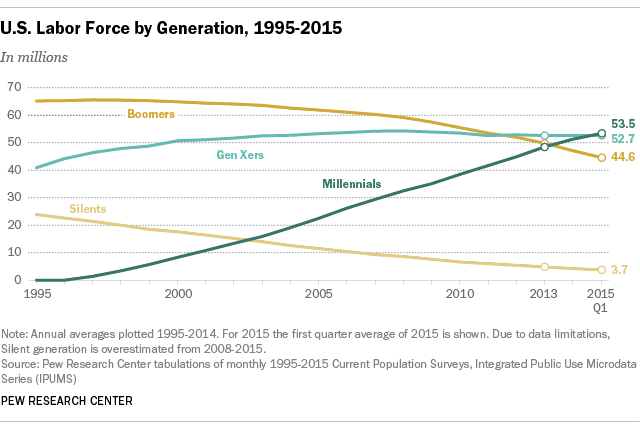Are our Future Leaders Hungry Enough?
I recently read a fascinating story in the Washington Post called “Why the Industrial Revolution Didn’t Happen in China.” As this is Election Day in the United States and the country selects a leader for perhaps the next four years, the question posed in the article has many levels of complexity and impact for us as global citizens including the focus of this blog; the future of leadership training and development challenges.
Didn’t Happen in China.” As this is Election Day in the United States and the country selects a leader for perhaps the next four years, the question posed in the article has many levels of complexity and impact for us as global citizens including the focus of this blog; the future of leadership training and development challenges.
One of the most interesting and thought provoking points raised in the article is the acknowledgement that the standard of living for lower middle-class (and above) people in industrialized Western and Asian societies is better now than it was for Kings, Emperors, and the Pope just two centuries ago. In 1750, the life expectancy of the typical human on the planet was 38 years of age. Today it is pushing 80, and the first person who will live to be 150 years old has already been born.
As I was reading and thinking about the implications of this data toward the way we lead our global business now, and the way we will lead them in the future, it reminded me of the most recent book I just finished called “Fractured Republic: Renewing America’s Social Contract in the Age of Individualism.” The theme of this book, written by Wall Street Journal writer Yuval Levin, is about how the United States has become a politically and socio-economically fractured republic. Levin’s theory is that both the far extremes of our political spectrum – the ultra-conservative republicans and the super-liberal democrats – both long for the “nostalgia” of the past which has led to the polarization of the country. Both Secretary Clinton and Mr. Trump are about the same age (late 60’s) and grew up in the “glory days” of the country. Mr. Trump desires to “Make America Great Again” and Secretary Clinton yearns for being “Stronger Together.” In their own ways, they are talking about their nostalgic view of the 1960’s. Mr. Trump’s perspective sees a Mad Men world where Bethlehem Steel is thriving in the steel belt of Pennsylvania and Secretary Clinton perceives a world of college protests where young people fight the establishment and come together to form a new world order.
The facts is in 2016 is that Bethlehem doesn’t want to be in the steel business anymore and Secretary Clinton IS the establishment she protested against while at Yale. Whatever your politics and beliefs on what drives a healthy economy, it is obvious that Mr. Trump’s approach and Secretary Clinton’s approach both focus on the past and perceptions of what the past was like, and not looking forward to a world where people will start living to be 150 years old.
Which brings me to my point about the next generation of leaders not being hungry. In the nostalgic days of the 1960’s young men joined big companies, got married to stay-at-home-moms, moved 11 times, made it to the executive level by the age of 50, and then retired by age 65 during a 40 year career at the same company. What is the theory of what drove them? Many feel it was because they were “hungry”. Their parents were depression-era parents and they were raised to be frugal and aggressive. They were also very white and very male and the lack of diversity in the workplace was outrageously poor.

According to the latest Census Data information, for the first time in our history there are more Millennials [53.5 million] in the workforce than “Gen Xers” [52.7 million] and “Baby Boomers” [44.6 million]. This Millennial generation is very diverse and even though we have a long way to go, we have made improvements.
Today’s generation is more diverse, has been raised by two working parents, and as noted earlier, their standard of living today is better than a King just 200 years ago. Their food is better, their beer is better, their health is better, there are more opportunities for jobs, and they can be entertained by video games, movies, and an infinite number of television shows at the touch of an app on their smartphones. And this is all at the slightly-above poverty level.
In terms of developing the skills needed to lead and drive innovative, prosperous companies that provide shareholder return, previous generations of workers sat through and expected multi-day and multi-week training programs. The “Gold Standard” companies created their own learning centers and a good leadership development programswas at least two weeks long. Participants would sit in a class-room and listen to some trainer talk at them for 40 hours and the “world was good” because the participants were so hungry, they took whatever content was thrown their way and did something with it.
These days, companies expect the same amount of content to be delivered in ½ day and Millennials want games, badges, leaderboards, and recognition of their efforts. Something is very different the very foundation of organizational success through skills development and training lies in the balance.
Whichever late-stage baby boomer gets elected today will be the president of a very different republic. One of the biggest challenges our new president and us all will face is the question about the next generation of leaders being hungry enough to put in more than the minimal effort to achieve the success that will drive the modern global economy.




